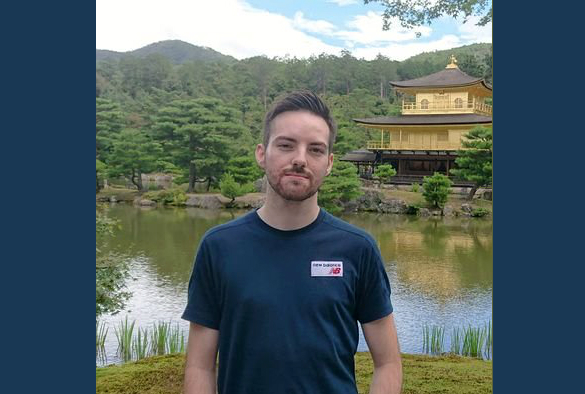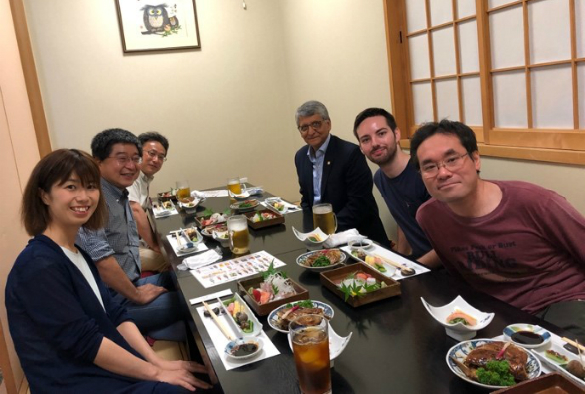
Samuel Rose is a PhD student at the University’s Institute of Integrative Biology. He is working in structural biology with Professor Samar Hasnain as a member of the Molecular Biophysics (MBG) group and is spending two years at RIKEN, Japan’s flagship research organisation.
Why Structural biology?
Structural biology helps to bring biological molecules to life by allowing us to visualise atomic details in three dimensions. With access to the 3D structures of proteins we can gain significant insights into how they are assembled, how they function and how they interact.
Generally, x-ray crystallography is the structural biologist’s tool of choice. Here, the protein is crystallised, producing a crystal lattice of many identical protein molecules. When x-rays interact with the atoms in the protein it provides diffraction data which give information on the spatial relationships of atoms, which the 3D structure can then be built from.
My research
I am currently based at the RIKEN Harima Institute in Japan as part of the international collaboration between the University of Liverpool and RIKEN. I am extremely fortunate to be able to spend two years here in Japan as part of my PhD with this unique opportunity allowing me to work full-time at the RIKEN Spring-8 center, which is the largest synchrotron radiation facility in the world. Here, more bright and intense x-ray beams are produced so the 3D structure generated can be of a much higher resolution compared to normal x-ray sources.
As well as using this tool regularly, I will also be using a very exciting new method in structural biology called X-ray Free electron laser (XFEL). This provides pulses with high densities of X-ray photons (light) in a very short time frame which is exciting as it allows radiation-damage (something which is inevitable in synchrotron radiation) free structures to be determined and also allows you to view lightning-fast biological processes in real-time, like a sub-microscopic movie.
I am working on these methods to answer questions relating to the structure-function-dynamics of a key enzyme involved in the denitrification process (where fixed nitrogen is recycled to the atmosphere) as part of the global nitrogen cycle. The greenhouse and ozone-depleting gas N2O is a significant by-product in this process, so has impacts on both agronomy and the environment and thus is an important area of research.
Life in Japan
I have been here in Japan for almost six months now as part of the Liverpool-RIKEN partnership and I am loving my time here. My research is really enjoyable, I have this unique opportunity to use and participate in the most advanced methods that are available for structural biology on a daily basis.
My social time here and experiencing what this country has to offer is also really enjoyable. The technology, people, food (even if it is a little different to the UK), drink and locations are all great – especially the vending machines and sake! If you have the opportunity to come to Japan, either through the Liverpool-RIKEN partnership or just on vacation, you will definitely have an amazing time.
Sam will conclude his work at the RIKEN Harima Institute in 2021 and return to Liverpool to complete his PhD. His work with the Institute forms part of a joint international graduate programme between the University and RIKEN that provides an exciting opportunity for PhD students studying biological and physical sciences at Liverpool to spend two years at one of RIKEN’s research institutes.
